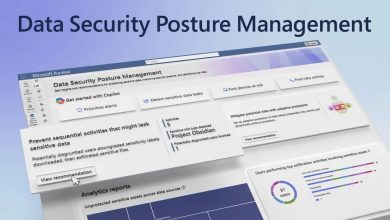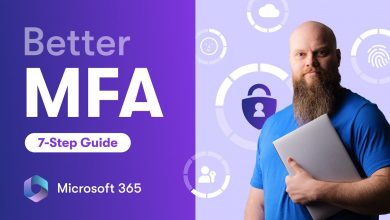Microsoft Sentinel: The Watchtower of Your Digital Estate
 In the ever-shifting landscape of cybersecurity, where threats loom larger and more elusive by the day, organizations need more than just a shield—they need a sentinel.
In the ever-shifting landscape of cybersecurity, where threats loom larger and more elusive by the day, organizations need more than just a shield—they need a sentinel.
Enter Microsoft Sentinel, a cloud-native Security Information and Event Management (SIEM) solution that stands as a vigilant watchtower over your digital estate.
Born in the Azure cloud and rebranded from Azure Sentinel in 2019 to reflect its enterprise-wide scope, Sentinel pairs with Windows 365 Enterprise and Frontline Cloud PCs to deliver not just desktop virtualization but a holistic security posture.
As you transition from traditional PCs, legacy VDI, or Azure Virtual Desktop, Sentinel offers a bird’s-eye view of your environment, weaving artificial intelligence, automation, and unparalleled threat intelligence into a tapestry of proactive defense.
What is Microsoft Sentinel?
At its core, Microsoft Sentinel is a SIEM platform fused with Security Orchestration, Automation, and Response (SOAR) capabilities—a dual-purpose powerhouse designed to collect, detect, investigate, and respond to threats across your entire organization.
Unlike traditional SIEMs that require hefty on-premises infrastructure or Azure Virtual Desktop’s reliance on custom configurations, Sentinel is built from the ground up in the cloud, leveraging Azure’s scalability and Microsoft’s decades of security expertise. It aggregates data from a dizzying array of sources—Windows 365 Cloud PCs, Microsoft 365 apps, on-premises servers, third-party clouds like AWS or Google Cloud Platform, and even physical devices—into a single, actionable lens.
This isn’t just about monitoring; it’s about reasoning over millions of signals in seconds, powered by AI and enriched by Microsoft’s global threat intelligence, which analyzes trillions of daily events.
For Windows 365 users, Sentinel extends its gaze to every Cloud PC, whether a persistent Enterprise desktop or a shared Frontline instance. It integrates seamlessly with Microsoft Entra ID for identity protection, Intune for device management, and Defender for endpoint security, creating a unified security operations (SecOps) ecosystem. Where legacy VDI might silo security data or traditional PCs scatter it across endpoints, Sentinel centralizes it in Azure Log Analytics, making it a linchpin for organizations embracing cloud desktops.
Key Capabilities in Action
Sentinel’s strength lies in its four pillars: collection, detection, investigation, and response. It begins by ingesting data at cloud scale, using nearly 100 built-in connectors—think Microsoft 365, Azure services, firewalls, or even Syslog from on-premises systems. For Cloud PCs, this means capturing every login, file access, or app interaction, stored in Log Analytics for up to two years to meet compliance needs.
Detection comes next, where Sentinel’s AI sifts through the noise, minimizing false positives with analytics rules and Fusion machine learning, which correlates low-level alerts into high-fidelity incidents. A suspicious login on a Frontline Cloud PC, paired with an odd file download, might trigger an alert that legacy systems could miss.
Investigation is where Sentinel shines for security teams. Its hunting tools, powered by Kusto Query Language (KQL), let analysts proactively search for threats, while built-in workbooks visualize attack timelines across Cloud PCs and beyond. Imagine a frontline worker’s session sparking an anomaly—Sentinel’s AI can map it to a broader campaign, drawing from Microsoft’s threat intelligence to reveal the full scope.
Finally, response is accelerated with playbooks—automated workflows built on Azure Logic Apps. A detected threat might lock a Cloud PC, notify IT via Teams, and open a ServiceNow ticket, all without human delay, a far cry from the manual triage of traditional setups.
Why Sentinel Matters for Windows 365
For organizations transitioning to Windows 365, Sentinel is the glue that ties cloud desktops to enterprise security. Traditional PCs often relied on disparate antivirus tools, while legacy VDI leaned on on-premises SIEMs that struggled with cloud scale.
Azure Virtual Desktop offered flexibility but required hands-on security management. Sentinel flips the script, delivering a fully managed, cloud-native SIEM that scales effortlessly with your Cloud PC fleet. It’s cost-effective too—pay-as-you-go pricing beats the sunk costs of legacy systems, with studies showing up to 48% savings over traditional SIEMs and a 201% ROI over three years.
Frontline users, with their shared, non-concurrent access, benefit from Sentinel’s ability to track usage patterns and detect anomalies across shifts—say, a retail worker’s credentials misused after hours.
Enterprise users gain persistent protection, with Sentinel watching over their Cloud PCs alongside other endpoints. Integration with the Microsoft 365 Defender portal unifies this with extended detection and response (XDR), offering a single pane of glass for SecOps teams.
The Broader Vision
Sentinel isn’t just a tool—it’s a philosophy. It embodies Microsoft’s push toward a unified SecOps platform, blending SIEM’s broad visibility with XDR’s deep endpoint focus. For Windows 365 adopters, it’s the assurance that cloud desktops don’t become security blind spots. It reduces alert fatigue (up to 79% less, per Microsoft), automates grunt work, and empowers analysts with Copilot-driven natural language queries—imagine asking, “Show me threats on Cloud PCs this week,” and getting a tailored report instantly.
As you move from legacy systems to Windows 365, Sentinel is your partner in this evolution. It’s not about replacing what worked—it’s about amplifying it, stripping away infrastructure burdens, and facing tomorrow’s threats with today’s tools. In the chapters ahead, we’ll dive into its deployment, its interplay with Cloud PCs, and how it transforms your security operations. For now, picture Sentinel as your ever-watchful guardian, ensuring that your journey to the cloud is as secure as it is seamless.
Sentinel Playbooks: Automating the Art of Response
In the high-stakes chess game of cybersecurity, where every move counts and time is a luxury, Microsoft Sentinel playbooks are your masterful gambit. These automated workflows, built on the robust foundation of Azure Logic Apps, transform raw threat detection into swift, decisive action—turning Sentinel from a watchful observer into an active defender. As organizations embrace Windows 365 Enterprise and Frontline Cloud PCs, playbooks become the secret weapon that bridges the gap between identifying a threat and neutralizing it, ensuring that cloud desktops remain secure without drowning IT teams in manual tasks. They’re not just scripts; they’re the heartbeat of Sentinel’s Security Orchestration, Automation, and Response (SOAR) capabilities.
What Are Sentinel Playbooks?
A playbook in Microsoft Sentinel is a pre-defined, customizable sequence of actions triggered by an alert or incident. Think of it as a digital playbook you’d hand to a team—except instead of plays drawn on a whiteboard, it’s logic orchestrated in the cloud.
Built using Azure Logic Apps, a low-code platform for workflow automation, playbooks connect Sentinel’s threat intelligence to a vast ecosystem of tools—Microsoft 365, third-party services like ServiceNow or Slack, and even custom APIs. When Sentinel detects something suspicious—like a phishing attempt on a Cloud PC— a playbook springs into action, executing steps like notifying admins, isolating devices, or gathering more data, all without human intervention.
Unlike the rigid automation of legacy VDI security tools or the manual workflows tied to traditional PCs, playbooks are dynamic and cloud-native. They’re designed to scale with your organization, adapting to the unique needs of Windows 365’s SaaS model—whether protecting a single Enterprise desktop or a fleet of shared Frontline instances.
How Playbooks Work
The magic of playbooks begins with a trigger—an alert or incident flagged by Sentinel’s analytics rules or AI-driven Fusion engine. Say a frontline worker’s Cloud PC triggers an alert for unusual file downloads. Sentinel passes this signal to a playbook, which kicks off with a Logic Apps workflow. The playbook might:
- Enrich the Alert: Query Microsoft Defender for Endpoint for more context—like whether the file matches known malware.
- Take Action: Use Intune to isolate the Cloud PC, cutting off network access to contain the threat.
- Notify: Post a message to a Teams channel or email the SecSorry about that, something didn’t go as planned. Please try again, and if you’re still seeing this message, go ahead and restart the app.



